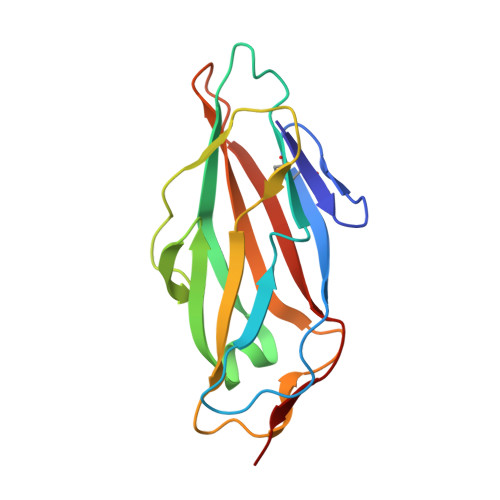KinITC-One Method Supports both Thermodynamic and Kinetic SARs as Exemplified on FimH Antagonists.
Zihlmann, P., Silbermann, M., Sharpe, T., Jiang, X., Muhlethaler, T., Jakob, R.P., Rabbani, S., Sager, C.P., Frei, P., Pang, L., Maier, T., Ernst, B.(2018) Chemistry 24: 13049-13057
- PubMed: 29939458
- DOI: https://doi.org/10.1002/chem.201802599
- Primary Citation of Related Structures:
5MUC - PubMed Abstract:
Affinity data, such as dissociation constants (K D ) or inhibitory concentrations (IC 50 ), are widely used in drug discovery. However, these parameters describe an equilibrium state, which is often not established in vivo due to pharmacokinetic effects and they are therefore not necessarily sufficient for evaluating drug efficacy. More accurate indicators for pharmacological activity are the kinetics of binding processes, as they shed light on the rate of formation of protein-ligand complexes and their half-life. Nonetheless, although highly desirable for medicinal chemistry programs, studies on structure-kinetic relationships (SKR) are still rare. With the recently introduced analytical tool kinITC this situation may change, since not only thermodynamic but also kinetic information of the binding process can be deduced from isothermal titration calorimetry (ITC) experiments. Using kinITC, ITC data of 29 mannosides binding to the bacterial adhesin FimH were re-analyzed to make their binding kinetics accessible. To validate these kinetic data, surface plasmon resonance (SPR) experiments were conducted. The kinetic analysis by kinITC revealed that the nanomolar affinities of the FimH antagonists arise from both (i) an optimized interaction between protein and ligand in the bound state (reduced off-rate constant k off ) and (ii) a stabilization of the transition state or a destabilization of the unbound state (increased on-rate constant k on ). Based on congeneric ligand modifications and structural input from co-crystal structures, a strong relationship between the formed hydrogen-bond network and k off could be concluded, whereas electrostatic interactions and conformational restrictions upon binding were found to have mainly an impact on k on .
Organizational Affiliation:
Institute of Molecular Pharmacy, Pharmazentrum, University of Basel, Klingelbergstrasse 50, 4056, Basel, Switzerland.















